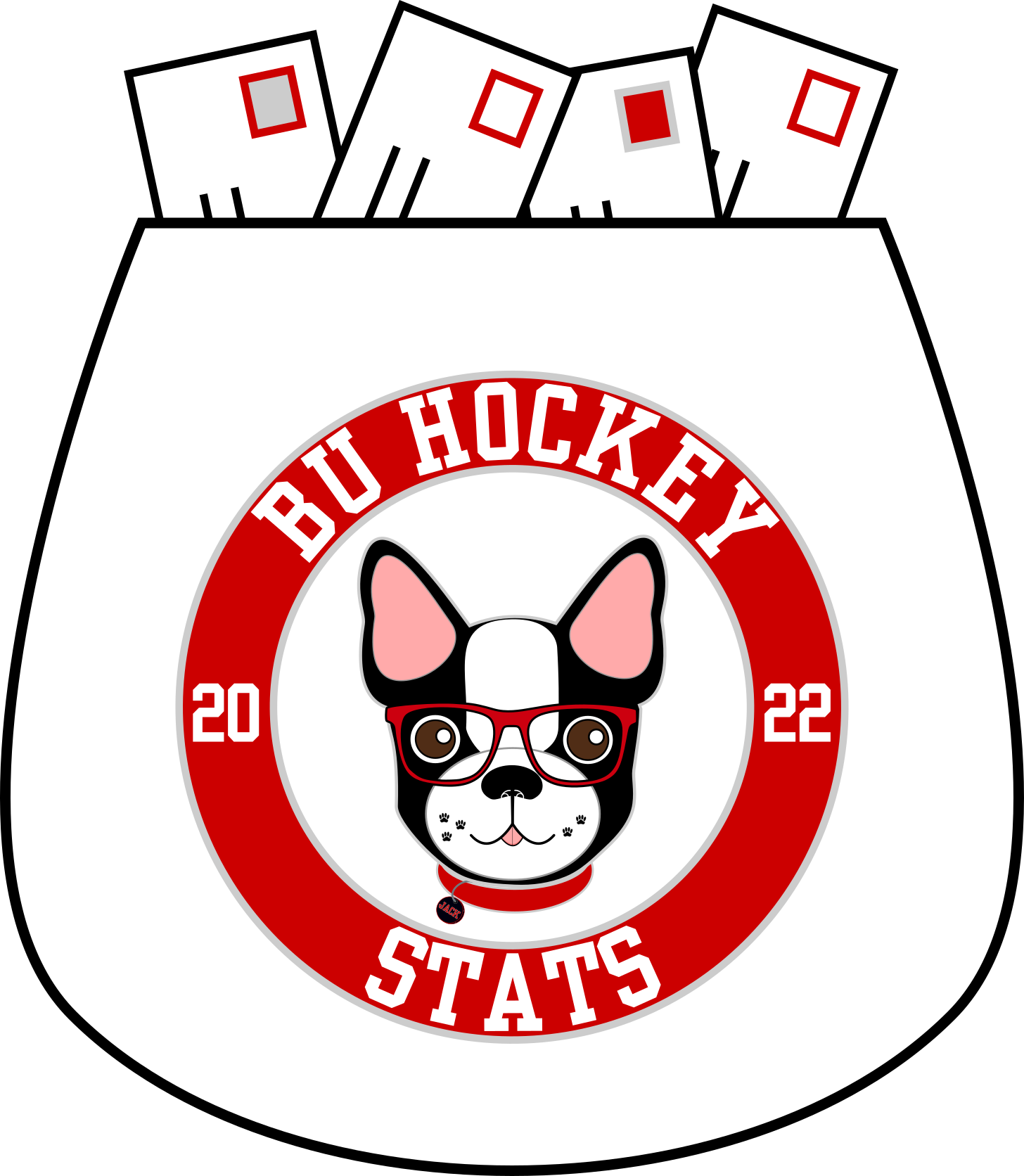Stats' Sheet December Mailbag
In this edition, we take a look at how the season could turn out, short goalies, and explaining the Circle of Suck
Welcome to the Stats’ Sheet December Mailbag. We’ll try to do these monthly, if we can get enough questions.
Since Chewy's a senior this year, any clue where he'll be headed after BU?
Depending on how the rest of the season goes, he has a chance to get signed to a pro deal. In the summer, he was invited to the Boston Bruins Development Camp, so there is some interest in NHL teams to at least look into adding him to their system.
BU has now started with a record of 9-6-1. What other seasons have they started with that record (if any) and what was the final result of their year? —Sean
BU has never started exactly 9-6-1. They’ve had 9 wins through 16 games in 3 different seasons, including this season, both of the other seasons 1958-59 and 2016-17 they started 9-5-2 through 16 games. In 1958-59, they finished 13-8-2 and lost to Boston College in the Beanpot Championship game. In 2016-17, they finished 24-12-3, losing to Harvard in the Beanpot Champion game and losing to BC in Hockey East Tournament Semifinals. They also lost to Minnesota Duluth in overtime of the 2017 West Regional Final, a night after beating North Dakota in 2OT on a Charlie McAvoy game winning goal.
Who is the shortest goalie in d1 hockey history? (Men’s or women’s)
In terms of Women’s the shortest that I could find were a few players that were 5’1’’ including former Terrier Ashlyn Aiello (2015-18). On the men’s side of things, 5’6’’ seems to be around the lower limit with Corey Winer of Army (1996-00), Henry Levin (1955-58) and Dennis Doyle (1967-68) both of BU among them.
What are the BU teams' records when not taking a penalty?
There are really two answers to this question: BU taking absolutely 0 PIM and BU not giving their opponent a power play. We will look at both.
The men, since 2002-03, have recorded 0 PIM four times and hold a 1-3-1 record, the last time coming in the 2024 West Regional Final when neither team recorded a penalty. When they allow 0 power plays, they are 4-3-2.
The women went 17 years and 628 games before they played a game where they did not take a penalty. The first time being coach Brian Durocher’s last game at the helm February 22nd, 2023 vs. Merrimack in the Hockey East Tournament Quarterfinal. The team had, one time earlier, a game in which they didn’t allow their opponent a power play, November 25th, 2022 vs. Yale. The Terriers have yet to win a game where they did not commit a penalty, holding an 0-3-0 record.
Can you explain the Circle of Suck?
The Circle of Suck, sometimes referred to as the Circle of Parity, illustrates that any can beat anyone any night in college hockey. It’s a way to tell any other fan that your team is better than their team because your team beat another team who beat another team that beat their team.
“The Circle” involves Graph Theory, which is the study of mathematical structures meant to show the relationship between objects, in this case college hockey teams. A graph consists of nodes and edges, in our case each “nods” represent a team and each “edge” represents a game played between a team. More specifically, our graph is a directed graph, meaning each edge has a direction to it pointing from the winner of a game to the loser of a game.
To get to “The Circle” we first must get all the edges (re: wins) for each pair of teams, that graph looks like this:
Once we have the full graph set up, we find what in graph theory is called a cycle. A cycle is a path that goes from one node to back to that node, in which no node appears more than once. In a directed graph like the one that we have, you can only follow the arrow (i.e., directed edge) in the direction it points. For example, BU beat UConn who beat UMass who beat BU (BU→UConn→UMass→BU), that would be a valid cycle in our graph but the inverse (BU→UMass→UConn→BU) would not because although there is a directed edge (read: arrow) from BU to UMass, there is not one from UConn to BU, since they have only played 1 game and BU won.
So now we go through and find the longest cycle, i.e., one that contains every team in the sport. We start at a node, then start following the edges and see how far we can get without hitting the same node twice, until we reach our starting node. Eventually we find a path around the sport that connects every team together, and there we have the “Circle of Suck”.





